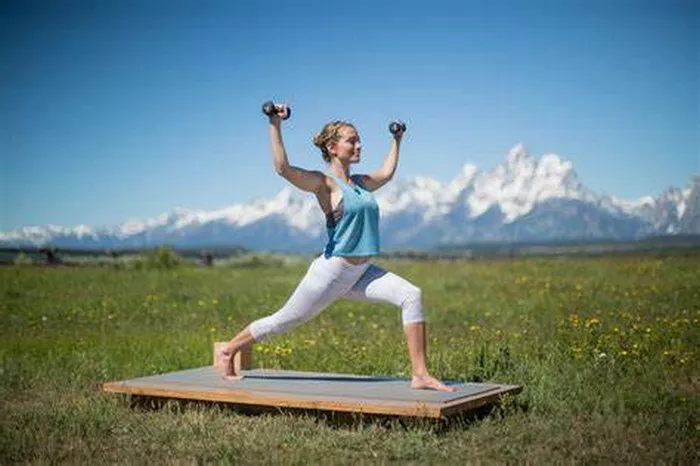Pregnancy brings about many changes in a woman’s body, including shifts in hormone levels, weight gain, and a growing belly. These physical and emotional changes can lead to challenges in getting quality sleep, which is essential for the well-being of both the mother and the baby. One of the most effective ways to improve sleep during pregnancy is through the practice of pregnancy yoga. Many expectant mothers turn to yoga for its gentle approach to maintaining physical activity, promoting relaxation, and easing discomfort. But can pregnancy yoga really help you sleep better?
In this article, we will explore how pregnancy yoga addresses sleep challenges by focusing on techniques that help calm the mind and relieve tension in the body. We’ll also look at specific poses and breathing exercises that are safe for expectant mothers, offering benefits that extend beyond better sleep. The goal is to provide you with insights into how yoga can be incorporated into your daily routine to improve your overall well-being during pregnancy and ensure you get the rest you need.
Why Sleep is Important During Pregnancy
Sleep plays a critical role in maintaining physical and emotional health during pregnancy. It is during sleep that the body repairs itself, the immune system is strengthened, and energy is restored for the following day. For pregnant women, sleep is even more important because the body is working overtime to support the growing baby. Lack of sleep can affect mood, increase stress, and even contribute to complications such as high blood pressure and gestational diabetes.
During pregnancy, many women experience difficulties with sleep, especially during the later stages when the baby grows larger, making it harder to find a comfortable sleeping position. Hormonal fluctuations, frequent trips to the bathroom, and anxiety about the upcoming birth can also lead to sleepless nights. Poor sleep can leave pregnant women feeling exhausted, affecting their ability to function throughout the day. This is where pregnancy yoga can offer relief, helping to improve both the quality and duration of sleep.
How Pregnancy Yoga Improves Sleep Quality
Pregnancy yoga is specifically designed to address the needs of pregnant women by offering gentle movements that alleviate the discomforts that can make sleeping difficult. Yoga poses help stretch and strengthen the muscles, improving circulation, and reducing aches and pains that often accompany pregnancy. These movements help to release physical tension, particularly in areas like the lower back, hips, and shoulders, where discomfort is most common during pregnancy.
In addition to easing physical discomfort, yoga encourages deep, controlled breathing, which promotes relaxation and calms the nervous system. Many yoga practices include mindfulness or meditation, which helps reduce anxiety and mental stress. These practices can be especially helpful at night, as they train the body to relax, making it easier to fall asleep and stay asleep. By addressing both the physical and mental aspects of pregnancy, yoga provides a holistic approach to improving sleep.
Safe Yoga Poses for Better Sleep During Pregnancy
When practicing yoga during pregnancy, it’s important to focus on poses that are safe and comfortable. Always listen to your body, and avoid poses that require lying flat on your back or twisting deeply, especially as the pregnancy progresses. Here are some gentle and effective yoga poses to incorporate into your routine to improve sleep:
Cat-Cow Stretch (Marjaryasana-Bitilasana): This is a gentle stretch that helps relieve tension in the back, particularly in the lower back, which often bears extra weight during pregnancy. It also promotes better spinal alignment, which can improve comfort while sleeping.
Child’s Pose (Balasana): A restorative pose that relaxes the body and stretches the hips and thighs. It also encourages deep breathing, helping to calm the mind and relieve anxiety, making it a great pose to practice before bed.
Reclined Bound Angle Pose (Supta Baddha Konasana): This relaxing pose opens up the hips and promotes circulation. When supported with pillows or blankets, it can be a soothing pose for relieving discomfort and calming the mind.
Legs Up the Wall (Viparita Karani): This pose helps reduce swelling in the legs and feet, a common issue during pregnancy. It also promotes relaxation and relieves tension in the lower back. Practicing this pose before bed can help prepare your body for rest.
Side-Lying Savasana: As lying flat on your back is not recommended during pregnancy, this variation of Savasana (the relaxation pose) allows you to rest on your side, which is the safest position for sleep during pregnancy. Supporting your body with pillows can help create a sense of comfort and relaxation, preparing you for sleep.
Breathing Techniques for Relaxation
In addition to physical poses, pregnancy yoga also emphasizes the importance of breathwork (pranayama) in promoting relaxation and reducing stress. Focusing on deep, controlled breathing can have a powerful calming effect on the mind and body, which is particularly useful when preparing for sleep.
Ujjayi Breathing (Ocean Breath): This technique involves taking slow, deep breaths through the nose, with a slight constriction in the throat. Ujjayi breathing helps calm the nervous system, reduce stress, and prepare the body for rest.
4-7-8 Breathing: This simple breathing technique is designed to promote relaxation by slowing down your breathing. Inhale for a count of 4, hold your breath for a count of 7, and exhale slowly for a count of 8. This pattern helps to reduce anxiety and prepare your mind and body for sleep.
Nadi Shodhana (Alternate Nostril Breathing): This pranayama technique helps balance the body’s energy and calm the mind. By focusing on breathing through alternate nostrils, it encourages a deep sense of relaxation, making it easier to unwind before bed.
The Importance of a Consistent Yoga Routine
Incorporating yoga into your daily routine can make a significant difference in your sleep quality over time. Like any form of exercise, consistency is key. Even practicing for just 15 to 30 minutes a day can lead to improvements in sleep, as well as increased energy, reduced anxiety, and a greater sense of overall well-being.
Try to create a calming environment when practicing yoga before bed. Dim the lights, play soft music, and focus on your breath as you move through your poses. The more you make yoga a regular part of your routine, the more you will notice the benefits, including better sleep.
See also: How to Increase Progesterone by Yoga: A Comprehensive Guide
Additional Tips for Improving Sleep During Pregnancy
Along with pregnancy yoga, there are other strategies you can incorporate into your daily routine to improve sleep. Here are a few additional tips:
Establish a bedtime routine: Create a calming pre-sleep ritual that helps signal to your body that it’s time to wind down. This could include taking a warm bath, reading a book, or practicing gentle yoga.
Stay hydrated, but limit fluids before bed: Staying hydrated during pregnancy is important, but drinking too much water before bed can lead to frequent trips to the bathroom, disrupting your sleep. Try to drink the majority of your fluids earlier in the day.
Use pillows for support: As your pregnancy progresses, it can be difficult to find a comfortable sleeping position. Invest in a pregnancy pillow or use multiple pillows to support your back, belly, and hips.
Create a comfortable sleeping environment: Keep your bedroom cool, dark, and quiet. Consider using blackout curtains, white noise machines, or a fan to create a sleep-friendly environment.
Conclusion
Pregnancy yoga offers a gentle and effective way to improve sleep quality during pregnancy. By addressing both physical discomfort and mental stress, yoga provides a holistic approach to better sleep. Incorporating safe yoga poses, breathing techniques, and mindfulness practices into your daily routine can help calm your body and mind, making it easier to fall asleep and stay asleep.
Remember that every pregnancy is unique, and it’s important to listen to your body. Always consult your healthcare provider before beginning any new exercise routine, including yoga. With consistency and mindfulness, pregnancy yoga can help you achieve better rest and a more peaceful pregnancy journey.
Related topics:
The Transformative Power of Prenatal Yoga: A Full Guide






















